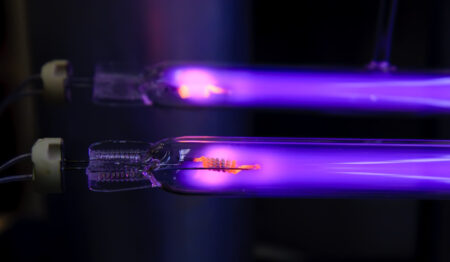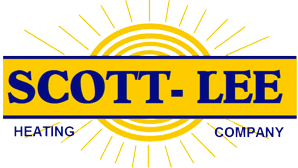August 7, 2024

Indoor air quality is developing into an increasingly important concern for homeowners across the nation, leading to a rise in using ultraviolet (UV) lighting in HVAC systems. These lights enhance air quality by decreasing the number of dangerous microbes in the air. However, whether these UV lights could harm the system’s coils is a typical worry among homeowners and HVAC experts.
Benefits of HVAC UV Lights for Better Indoor Air Quality
UV lamps for HVAC systems are a perfect choice for homeowners who want to make their homes healthier because of the positive effects they have on indoor air quality. The UV light from these bulbs can destroy or render inactive a wide variety of germs, viruses, and mold spores. Cleaner, fresher air can circulate throughout the house thanks to the UV lights that help reduce these hazardous particles.
When indoor air quality is good, people have less trouble breathing, fewer allergies and other health problems. People who already have respiratory issues or compromised immune systems may find this especially helpful, as it lessens their exposure to airborne germs.
HVAC UV lamps are beneficial for pets, too. Air pollution can aggravate the symptoms of many common domestic pets, especially those that have fur. Greater airflow and fewer allergens are good for pets’ respiratory health, which means fewer cases of pet allergies and symptoms similar to asthma. In the end, the use of UV lights in the house benefits not only the residents but also the pets, making it a more comfortable living environment for all.
Types of HVAC UV Lights
Coil sterilization lights and air sterilization lights are the two most common types of UV lights used in HVAC systems. The HVAC system’s unique requirements, as well as the intended results for air quality and system maintenance, dictate the optimal use of either form of UV light although both are extremely beneficial.
HVAC technicians usually place coil sterilization lights close to the evaporator coil. They eliminate the buildup of germs, mold, and other microbes on the coil by emitting ultraviolet-C (UV-C) radiation. The continuous exposure to UV-C light keeps pollutants from accumulating, which keeps the HVAC system running smoothly and lowers the frequency of maintenance needs.
An HVAC system houses air sterilization lights within its ducting. Even though these lamps also make use of UV-C technology, their purpose is to clean the air as it flows through the system. Because it lowers the concentration of dangerous airborne particles, this UV light is especially helpful for those who have allergies or respiratory problems.
Common Concerns About UV Light Damage
Some consumers and professionals worry UV lights could damage the coils or other components of HVAC systems, even though they have many positive effects on indoor air quality. A common source of these worries is the understanding that UV light can damage some materials and even some forms of life. However, keep in mind that HVAC UV lights aren’t dangerous to the system’s parts if set up and maintained correctly.
Reduction of Mold and Bacteria
Among the many uses for UV lamps in HVAC systems is the drastic reduction in mold and bacteria growth on surfaces and coils. This is because these microbes thrive in the damp conditions found in air conditioning systems. By halting the development of biofilm — which can lower system performance and possibly release dangerous spores into the air — the UV lights successfully suppress their growth. In fact, UV lights help the coils last longer and work better by preventing microbe formation.
Improved Airflow
Contaminants like mold and bacteria can grow on coil surfaces, reducing airflow and making the system work harder to keep temperatures where they should be. To keep airflow unrestricted over the coils, UV lights aid in preventing this accumulation. Not only does this increase system efficiency, but it also improves the home’s air circulation and quality.
Extended Coil Lifespan
UV lights prevent microbial growth and reduce the need for frequent coil cleaning. Plus, keeping coils clean reduces the likelihood of corrosion and degradation, which could further extend the life of these crucial components.
Energy Efficiency
HVAC systems that use UV lamps are more energy efficient. This is because it takes less effort for the system to reach the proper temperature settings when the coils are clean and free of biofilm and other pollutants. Less stress on the system leads to less energy usage, which means less money for households to pay for utilities.
Reduced Maintenance Needs
UV lamps installed in HVAC systems reduce the frequency of maintenance tasks, especially coil cleaning, because the lights sterilize constantly. This makes them quite useful for preventing the accumulation of organic debris that would otherwise require frequent cleaning. Fewer servicing appointments mean less expense and hassle for homeowners.
Potential UV Light Exposure Damage
Most times, ultraviolet lights won’t harm HVAC parts, but some materials may fade or even melt under the intense light that UV lights produce. If there are any rubber seals or plastic parts near the coils, this is very important to note. When UV lights are set up correctly and placed according to the manufacturer’s instructions, though, this risk is lessened. As a whole, today’s HVAC UV light systems do an excellent job of treating the air and coil surfaces, damaging no delicate components.
Impact on Coil Coatings
Some HVAC coils have protective coatings that increase their lifespan and performance. These coatings might wear out with time if exposed to UV radiation. Thankfully, HVAC systems nowadays include UV-resistant coatings. To ensure compatibility, homeowners should consult HVAC professionals and coil manufacturers before implementing a UV light system.
Preventing UV Light Damage to Coils
The installation and maintenance of HVAC coils are of the utmost importance to reduce the likelihood of UV radiation damage. HVAC technicians can make sure the UV intensity at the surface of the coil is within acceptable limits by following the manufacturer’s instructions for light placement. You can catch any indications of wear and tear early on by checking the UV lights and their surroundings regularly.
To further reduce exposure and prolong the life of the lights and HVAC components, you might adopt UV lamps with automatic shut-off capabilities or timers. With these functions, you can set the UV lamps to turn on and off at specific times, minimizing wear and energy waste without sacrificing cleanliness or air quality.
For example, to maximize the effectiveness of the sterilization process, you can set the UV lights to activate during peak HVAC usage periods. When there isn’t much going on, like throughout the night, you can set the UV lights to turn off. This will save energy and keep the lights and HVAC components running for longer.
Scott-Lee Heating Company is your go-to company for all things related to UV lights in HVAC systems. We also offer furnace repairs, AC installations, HVAC zoning systems, geothermal systems, metalwork and much more. Schedule UV light maintenance or installation for your home in St. Louis, MO with us.
